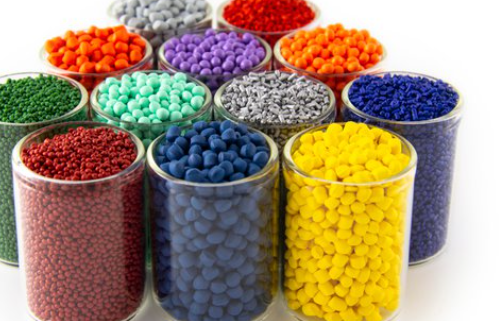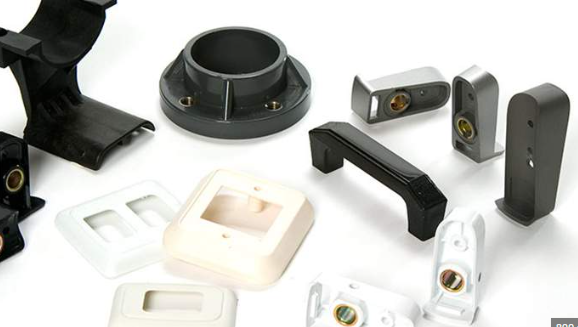The temperature needed for PVC processing ranges between 350°F to 450°F, varying based on the processing method such as extrusion, injection molding, and the specific PVC formulation.

Temperature Requirements for Different PVC Processing Methods
Extrusion
The temperature requirement for PVC extrusion typically ranges between 350°F to 450°F (175°C to 235°C).
- Temperature Control: Accurate temperature control is crucial to ensure a smooth extrusion process. The use of modern temperature control units (TCUs) and sensors can help maintain the desired temperature range.
- Material Formulation: The specific formulation of PVC, including the types and amounts of additives used, can influence the temperature requirements for extrusion.
- Die Design: The design of the extrusion die, including its size and complexity, can also impact the temperature requirements for PVC extrusion.
- Processing Speed: The speed at which PVC is fed through the extrusion process can affect the temperature needed for optimal extrusion.
Injection Molding
Injection molding is a manufacturing process for producing parts by injecting molten PVC material into a mold. The temperature requirements for PVC injection molding usually range from 360°F to 450°F (182°C to 232°C).
- Mold Temperature: The temperature of the mold itself can significantly impact the quality and characteristics of the injected PVC part. A well-designed mold cooling system is essential for maintaining the desired mold temperature and ensuring optimal molding results.
- Material Formulation: Similar to extrusion, the specific formulation of PVC used can affect the temperature requirements for injection molding.
- Machine Specifications: The specifications of the injection molding machine, such as its clamp force and injection speed, can also impact the temperature requirements for PVC injection molding.
- Cycle Time: The cycle time of the injection molding process can affect the temperature required for PVC injection molding. Shorter cycle times may require higher temperatures to ensure complete mold filling and adequate part quality.
Blow Molding
The typical temperature range for PVC blow molding is between 350°F to 450°F (175°C to 235°C).
- Preform Temperature: The temperature of the PVC preform prior to inflation can significantly affect the final product’s quality and characteristics.
- Mold Temperature: Maintaining an optimal mold temperature is crucial for achieving desired product dimensions and surface finish.
- Material Formulation: The formulation of the PVC material can influence the temperature requirements for blow molding.
- Processing Speed: The speed of the blow molding process can also affect the temperature requirements for PVC blow molding.
Calendering
Calendering is a process where PVC material is heated and pressed through rollers to achieve a desired thickness and surface finish. The temperature requirements for PVC calendering typically range from 300°F to 400°F (149°C to 204°C).
- Roller Temperature: The temperature of the rollers used in the calendering process can significantly impact the material’s flow and final thickness.
- Material Formulation: The formulation of the PVC material, including the use of additives and fillers, can influence the temperature requirements for calendering.
- Processing Speed: The speed at which PVC is fed through the calendering process can affect the temperature needed for optimal calendering results.
- Product Dimensions: The desired thickness and surface finish of the final product can also impact the temperature requirements for PVC calendering.
Factors Influencing Temperature Settings
PVC Resin Types
The type of PVC resin used is a significant factor that influences the temperature settings in PVC processing. There are various types of PVC resins, and each has its unique temperature requirements.
- Homopolymer Resin: Homopolymer PVC resins are pure PVC resins which require a temperature range of 350°F to 450°F (175°C to 235°C) for processing.
- Copolymer Resin: Copolymer PVC resins are a blend of PVC and other materials. They require a slightly lower temperature range of 340°F to 440°F (171°C to 227°C) due to the presence of other materials that may have lower melting temperatures.
Additives and Fillers
They can significantly influence the temperature settings required for PVC processing.
- Plasticizers: Plasticizers are additives that increase the plasticity or fluidity of PVC, often lowering the temperature required for processing.
- Stabilizers: Stabilizers help in maintaining the desired properties of PVC during processing by preventing degradation at high temperatures.
- Fillers: Fillers like calcium carbonate or talc are used to improve the mechanical properties or to reduce the cost of PVC products. They can influence the temperature settings as they may have different melting or softening temperatures compared to PVC.
Machine Specifications
The specifications of the machines used in PVC processing also significantly affect the temperature settings.
- Machine Capacity: Larger machines with higher capacity may require higher temperatures to ensure consistent flow and filling during PVC processing.
- Screw Design: The design of the screw in extrusion or injection molding machines can affect the temperature settings. A well-designed screw can ensure a more uniform temperature distribution and better mixing of PVC and additives.
- Clamp Force: In injection molding, the clamp force of the machine can impact the temperature settings. Higher clamp forces may require higher temperatures to fill the mold completely and achieve the desired product quality.
Temperature Control Technologies
Temperature Control Units (TCUs) are essential devices in PVC processing for maintaining the required temperature ranges. They circulate a heat transfer fluid through the processing equipment to either heat or cool the PVC material to the desired temperature.
- Performance Specifications: The performance of TCUs can vary, with some capable of maintaining temperatures within ±1°F (±0.5°C) of the set point.
- Cost: The cost of a TCU can range from $2,000 to $10,000 depending on its capabilities and brand.
- Efficiency: Higher efficiency TCUs can reduce energy consumption, leading to lower operational costs over time.
Temperature Sensors and Controllers
Temperature sensors and controllers play a crucial role in monitoring and controlling the temperature during PVC processing.
- Sensor Types: Common sensor types used in PVC processing include thermocouples and RTDs (Resistance Temperature Detectors).
- Accuracy: The accuracy of temperature sensors is critical to ensuring the quality of the final product. High-accuracy sensors can detect temperature variations as small as ±0.1°F (±0.05°C).
- Control Algorithms: Controllers use algorithms to adjust the temperature based on the data received from the sensors. Advanced control algorithms can respond to temperature changes more quickly and accurately, improving the overall process control.
- Cost: The cost of temperature sensors and controllers can range from a few hundred to several thousand dollars depending on their accuracy and capabilities.
Cooling Systems
Cooling systems are used to remove excess heat from the PVC material and processing equipment, ensuring the temperature remains within the desired range.
- Cooling Methods: Common cooling methods include water cooling, air cooling, and evaporative cooling.
- Efficiency: The efficiency of a cooling system can significantly impact the energy consumption and operational costs of PVC processing.
- Cost: The cost of cooling systems can vary widely, from a few thousand to tens of thousands of dollars, depending on their capacity and efficiency.
- Maintenance: Regular maintenance is required to ensure the cooling system operates efficiently and reliably over time.
- Environmental Impact: The choice of cooling method can have a significant environmental impact, with some methods requiring a substantial amount of water or releasing emissions into the atmosphere.
Effects of Processing Temperature on PVC Properties
Mechanical Properties
The processing temperature has a significant effect on the mechanical properties of PVC products. It can impact the strength, flexibility, and durability of the final product.
- Tensile Strength: The tensile strength of PVC can be optimized by processing at a temperature that allows for complete melting and adequate flow, which ensures a uniform material distribution throughout the product.
- Impact Resistance: A proper processing temperature can enhance the impact resistance of PVC by minimizing residual stresses that could lead to cracking or brittleness.
Thermal Properties
- Heat Deflection Temperature (HDT): The HDT of PVC can be improved by processing at a temperature that ensures complete fusion of the polymer particles, leading to a more homogeneous and thermally stable product.
- Thermal Expansion: The thermal expansion coefficient of PVC is affected by the processing temperature, which influences the material’s crystallinity and molecular orientation.
Chemical Resistance
- Resistance to Acids and Bases: The resistance of PVC to acids and bases can be enhanced by processing at a temperature that ensures a complete fusion and homogenization of the material.
- Solvent Resistance: The solvent resistance of PVC products is also affected by the processing temperature, with higher temperatures generally leading to better fusion and a more homogeneous material that can withstand exposure to solvents.
- Environmental Stress Cracking Resistance (ESCR): Processing temperature can influence the ESCR of PVC, which is its resistance to cracking under exposure to certain chemicals while under stress.

Case Studies: Optimizing Temperature for Quality and Efficiency
Case Study 1: Improving Surface Finish in Extruded PVC Products
A manufacturing company specializing in extruded PVC products faced challenges with the surface finish of their products. The surface irregularities were affecting the aesthetic appeal and the marketability of their products.
- Solution Implementation: The company invested in advanced Temperature Control Units (TCUs) and implemented real-time temperature monitoring and control systems. By optimizing the processing temperature to a range of 380°F to 420°F (193°C to 215°C), they were able to significantly improve the surface finish of the extruded products.
- Outcome: The improved surface finish led to higher customer satisfaction and an increase in market share. Furthermore, the optimized temperature settings resulted in reduced waste and lower operational costs.
- Key Learning: This case demonstrated the critical role that precise temperature control plays in achieving a high-quality surface finish in extruded PVC products.
Case Study 2: Reducing Cycle Time in PVC Injection Molding
A leading manufacturer of PVC fittings was looking to increase their production capacity to meet growing demand.
- Problem Identification: A detailed examination revealed that the set processing temperatures were lower than optimal, leading to longer cycle times as more time was needed for the material to cool and solidify in the mold.
- Solution Implementation: By increasing the processing temperature to 430°F (221°C) and adjusting the cooling system to maintain a rapid cooling rate post injection, they were able to significantly reduce the cycle time.
- Outcome: The reduction in cycle time led to an increase in production capacity, enabling the company to meet the growing demand without investing in additional injection molding machines.
- Key Learning: This case illustrated the importance of optimizing processing temperatures in tandem with cooling systems to achieve shorter cycle times and higher production efficiency in PVC injection molding.




